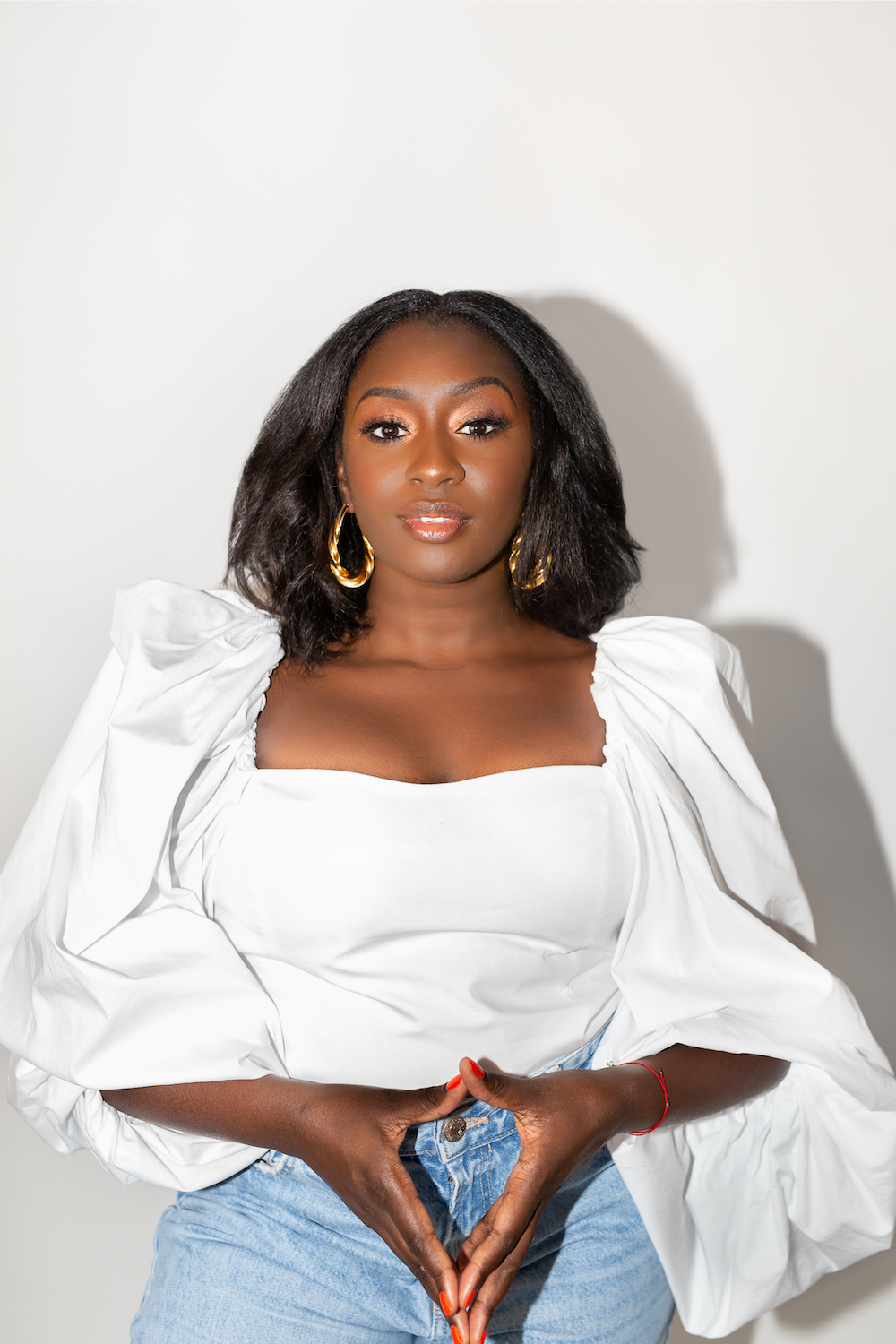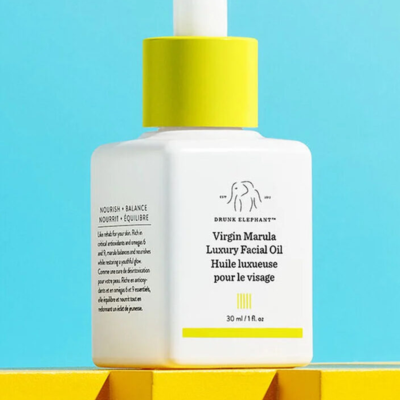
Founder Diarrha N’Diaye-Mbaye Goes Behind The Headlines Of Ami Colé’s Sephora Rollout And L’Oréal Funding
Ami Colé is graduating from being the Next Big Thing to being a big thing.
The clean cosmetics brand has rolled out across Sephora’s retail network in the United States of almost 600 doors after launching in late 2022 on Next Big Thing displays at nearly half of the beauty specialty chain’s locations. At Sephora stores, it’s selling $20 Hydrating Lip Treatment Oil, $29 Skin-Enhancing Lightweight & Blurring Foundation Stick, $32 Desert Date Cream Multistick, $32 Skin Enhancing Tinted Moisturizer and $19 Lash-Amplifying Mascara.
Skin-Enhancing Lightweight & Blurring Foundation Stick
Skin-Enhancing Lightweight & Blurring Foundation Stick
The expansion coincides with Ami Colé securing an undisclosed amount of capital from L’Oréal’s venture capital arm BOLD. It previously raised more than $1 million in funding from investors, including True Beauty Ventures, Greycroft, Debut Capital, Imaginary Ventures and Katherine Power, founder of Versed and Merit.
Founder Diarrha N’Diaye-Mbaye informed the publication Women’s Wear Daily that Ami Colé, which is named for her mother, owner of a Harlem hair braiding salon, is approaching $3.5 million in 2024 sales. She tells Beauty Independent it expects to register a 75% sales increase this year.
The brand launched in 2021 in direct-to-consumer distribution and promptly secured partnerships with Thirteen Lune, Violet Grey, Net-a-Porter and Goop prior to its Sephora entrance. With its heightened Sephora presence, N’Diaye-Mbaye projects retail will account for 60% of its sales.
Ami Colé represents L’Oréal’s first early-stage investment in a brand established by a Black founder with Black core customers. N’Diaye-Mbaye appreciates the company signaling to the beauty industry that Black-owned brands like Ami Colé deserve support. However, despite the BOLD backing and sales momentum, she acknowledges that 2024 has been a difficult year for business.
N’Diaye-Mbaye says, “I’ve been in the space where I’ve had to ask, ‘Is this brand going to survive? Is this the last year of us being alive?’” Turning to the landscape broadly, she adds, “There are going to be some brands that are going to shut down naturally because economics…but if we don’t create the oxygen or the kind of chamber system to allow these brands to exist, then we’re going to be right back where we were in a couple years. I’m hoping that brands like mine can help buffer the blow that’s to come.”
Ahead, N’Diaye-Mbaye elaborates on Ami Colé’s growth, why she’s pressed pause on a field salesforce, and where the new funding will go.
Ami Colé just exhibited at Sephoria for the first time. What was that like?
We created a hair salon after my mom and the hair salon in Harlem and explained the genesis of Ami Colé. We leaned into our hero product, Lip Treatment Oil, and gave that away. We had some scratch-offs and people would come and play, and while they were playing, we got a chance to explain the brand to them.
I wasn’t kicking and screaming to go because I was like, is there space for a small brand to be there? A lot of brands activating were big brands with huge budgets, but I understand why it’s important. Basically, what other scenario would you be in front of 3,000 hyper consumers?
We got to talk to a lot of different women, and if 25% of them convert to customer sales, that’s good. Sephora did help us materialize the activation, too. I wonder, if it was coming straight out of our pocket, would I feel exactly the same? For now, I’m happy.
Did Sephoria attendees already know about the brand?
It was 50/50. I kept asking them, how did you find out about us? It was three-prong. Some were content creators, and they either were part of the Sephora ecosystem through Squad or their Reddit program, and then some found out about us through TikTok, but never got a chance to try the brand. Others were like, “Nope, never heard of you.”
What has Ami Colé done to prepare for the Sephora expansion?
We’re joining a curated section with Iris&Romeo and Caliray, so that’s going to be interesting to walk into the space of the customer that’s looking for clean beauty specifically, but adding a multicultural dimension to it. It’s obviously nerve-racking. We’re still a very small brand.
Brand awareness will be an opportunity for us. We tried to ramp up our influencer marketing flywheel, investing in that as a company internally and also relationship building, whether through paid or seeding.
Logistically, it’s been hard in terms of inventory, making sure that everything is stocked, hence the need for funding. We’re not carrying everything in store. There’s a level of discipline you need to have to have curations of certain products in this space.
We want to make sure we thrive in this new space. I’m an operator, so I’m always like, how can we make this better, more efficient to make sure we’re being productive?
What have customers been loving from the brand’s assortment?
There’s two stories to this. There’s one that on Sephora.com and then in store. Across the channel, Lip Treatment Oil is our highest penetration, but we launched Skin-Enhancing Stick in January, and that’s helping out with our mix as well. Lip Treatment Oil is about 35% of our sales, and it used to be about 40% and higher, and now the Skin-Enhancing Stick is taking some market share, up to 20% on certain months.
We love that Lip Treatment Oil was able to hook our audience in, but we get the most retention and loyalty in complexion. Once you find your shade, you want to continue to believe in the brand and invest in it. I’m not too surprised there.
Powder is interesting as well. We’re only selling that on dot-com, but because we had a viral moment late last year that’s still finding headwind, that’s been a hidden gem for us. That’s probably one of the only SKUs that’s outpacing last year in terms of trend, penetration and velocity. That’s also hard because customers walk into the store and can’t find it. Logistically, it’s a little bit of a nightmare, but I understand shelf space is finite.
Lip liner that launched this year is doing well also. I can understand that because there’s still opportunity to have even more inclusivity when it comes to liner shades, lip tones and shapes at Sephora. That was doing well on dot-com, but that’s not available in stores.

What have you’ve focused on to be successful on shelf?
We showcase our story out loud, leaning into people that believe in the brand and can tell their story through our brand product ethos, most recently Aysha Harun, who was formerly a Sephora squad member. We’re not a makeup artistry brand, we’re not a celebrity-led brand. I’m a random girl from Harlem that happened to love beauty and have been able to mobilize and translate my community’s passion for beauty and a certain look to bring that to store and furthermore to commercialize that.
It’s hard as you go bigger and bigger to tap into community, but I realize, once we do that, we see the impact in store. That means looking at people to be megaphones for us like Aysha, Kelly Rowland, Mindy Kaling. We’re trying to, with the resources we have, scale that to be able to add a microphone to the smaller communities we’ve been able to create.
And a lot of it is coastal right now—LA, New York City, DC, a little bit of Atlanta—but how do we get into the middle of America? How do we scale what we’ve been able to do with Canada? [We’re] focusing on how to create more localized effects to scale that up.
Have you been doing pop-ups or other in-store activities?
In the beginning, we did. Unfortunately, we had to pause field. I try my best to walk into as many stores as possible. You’ll see on my Instagram sometimes I’ll pop into 42nd street, downtown Brooklyn, SoHo, our top-selling doors to get in front of our BAs [beauty advisors]. They’re like our social media managers, they’re extension of our team.
Honestly, it takes a lot to activate field. The third tranche of this growth story is understanding how to successfully activate it. We had an amazing team, but we had to scale that back given the resources, given how tight this market and this year was. So, we’re taking a step back for now.
In the meantime, we’re doing low-touch activations, literally walking into stores doing trainings. We have a head of wholesale that’s going into the store, making sure things are set and also opting in for one-sheeters to educate and sending out virtual training.
The thing about field is it takes time to see ROI. It’s not going to be something you even see in the first year. It might be the third year where it’s finally clicking, for many reasons. One is from a resource perspective and how much education is required, but turnover is really high.
Let’s be realistic. You may invest in training and give her or him the proper story and tools, but that person might not be there six or seven months later. I think it’s stabilizing more than it has over the past couple of years and especially post-COVID, but we’re trying to figure that part out and understanding which part of our journey we truly want to turn that on.
Ami Colé launched at Sephora Canada in August. Why has your brand resonated so much with Canadians?
We try our best to be as data-centric as possible, and if you look at our back end of AmiColé.com, a lot of customers were coming in from Canada. The Canadian audience is interesting because it’s a very multicultural one that we don’t talk about enough. There are many Senegalese and Ghanaian women that live there. There’s a huge multicultural audience there that’s not traditionally been spoken to or serviced.
There are many people since the beginning that wanted us to ship to Canada, and while we turned that on, it didn’t work for us because it ended up costing the customer double to get from AmiColé.com to be able to get through customs and get the product they wanted from us. We knew we needed to have a partner like a Sephora to be able to leverage.
Timing was opportune as well. Launching Sephora Canada as well as the Aysha Harun partnership, it was all of those layers together. I’m hoping that, once we cross the pond over to the U.K., we’ll see similar success being able to natively talk to that person that’s not living in North America.

Some of the funding from BOLD is going toward Sephora expansion. Where else are you allocating it?
Expansion, for sure. Retail is no joke. Sephora is an investment, but also team. I am on the digital marketing calls, I am doing the hiring, I’m doing the firing, I’m doing the fundraising. I’ve been doing this now for five years, I wouldn’t call it a glass ceiling per se, but there is a level of expertise that’s hard for me to take us to $5 million to $10 million to $50 million, etc.
We’re definitely trying to attract the right talent and make sure that we have a buffer for that and prepare for choppy waters. This year, we’ve seen it all, we’ve seen our favorite brands shut down, and we see people literally running out of cash.
Are there specific Ami Colé is hiring in?
We talked a lot about wholesale, which we’re definitely leaning into, but we’re also never losing sight of our website, so scaling back into Meta. I know that’s almost a curse word for many people, but really mapping out our digital footprint as well, understanding what other channels we can play into.
TikTok is very interesting in its role. In terms of discoverability, it seems like all things need to work simultaneously for Sephora to even work. People walk into Sephora doors with their TikTok checklist, so having the team really turn that up, outside of the influencer. Having a social media manager for that is really important for us. That’s a blind spot for us, so I want to ramp that up for sure.
Then, our leadership team, making sure that we have someone who’s in the finance world. Right now, we have fractional support, but bringing that in-house I think will be a major unlock for us. We’ve got to strike while the iron is hot.
What’s next for Ami Colé?
Taking it one day at a time, trying to grow a loyal clientele, people that really care for us and who are able to shout us in a room that we’re not in. As I mentioned, pick up the heartbeat of Ami Colé and bring it to different nations. We have our eye on the U.K.
We’re trying to continue to build the best products that we can. The brand hasn’t been churning out as much newness because we want to focus on the logistics, productivity of it all. [We’re] trying to listen and go deeper in our communities versus wider all the time.




